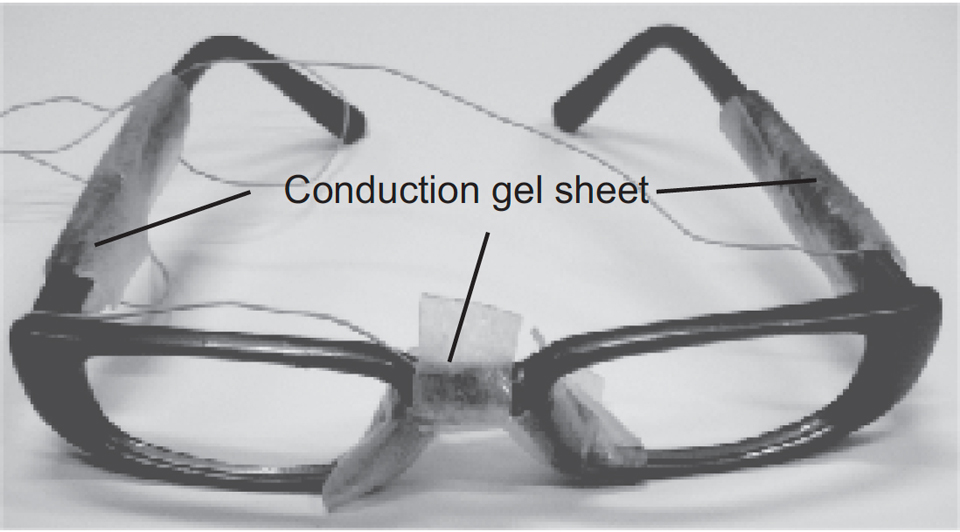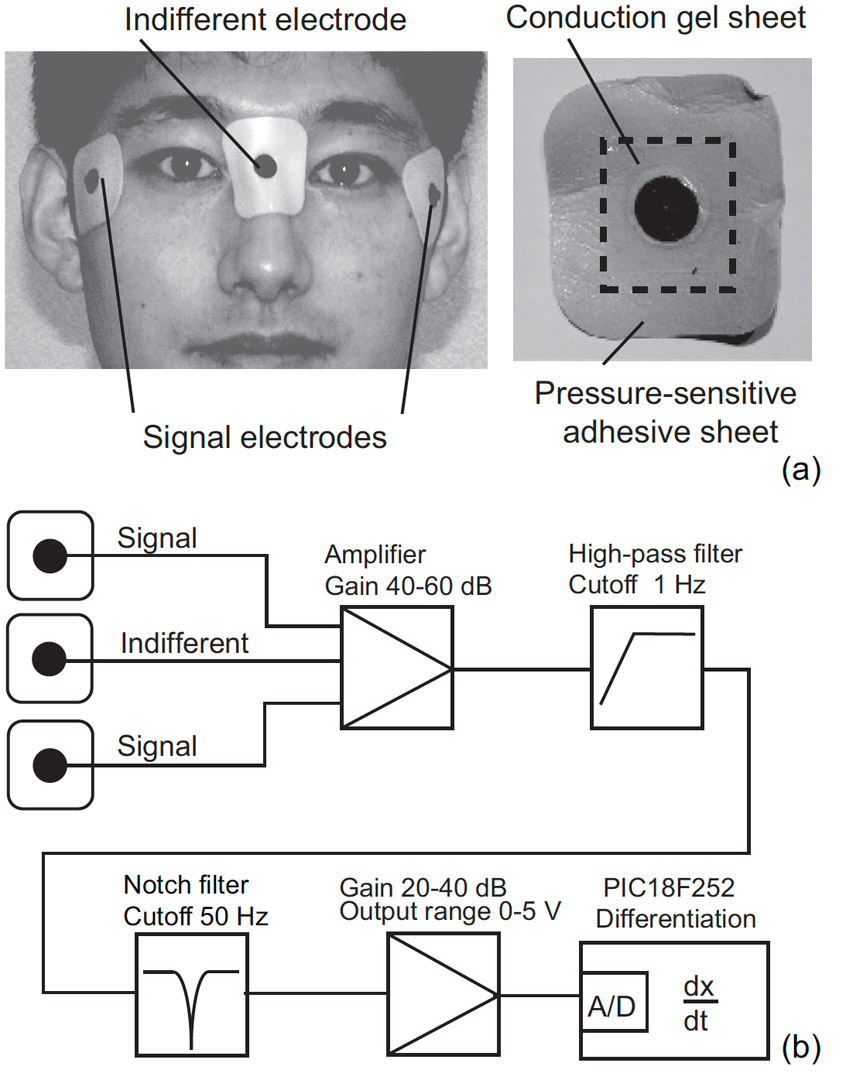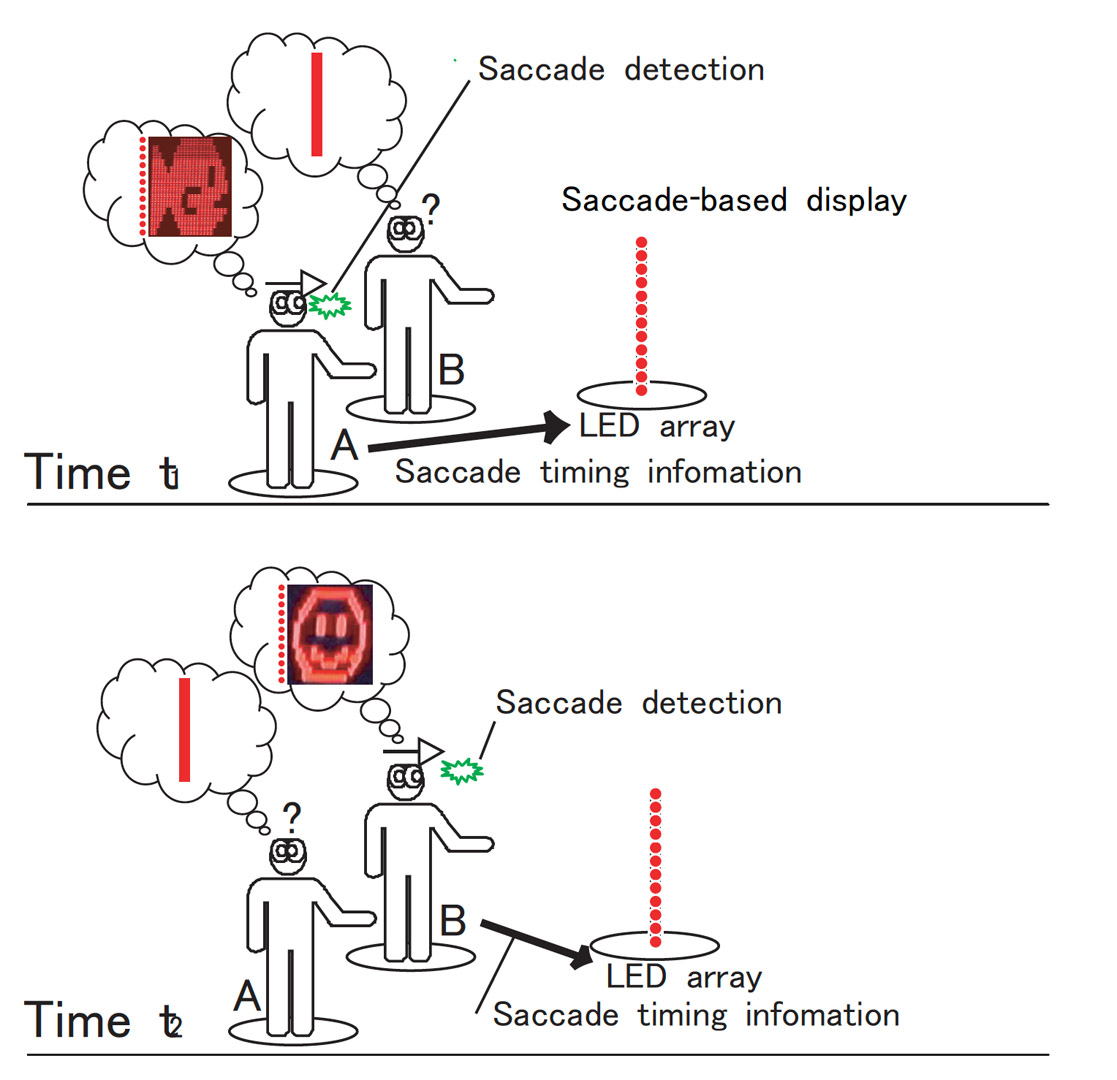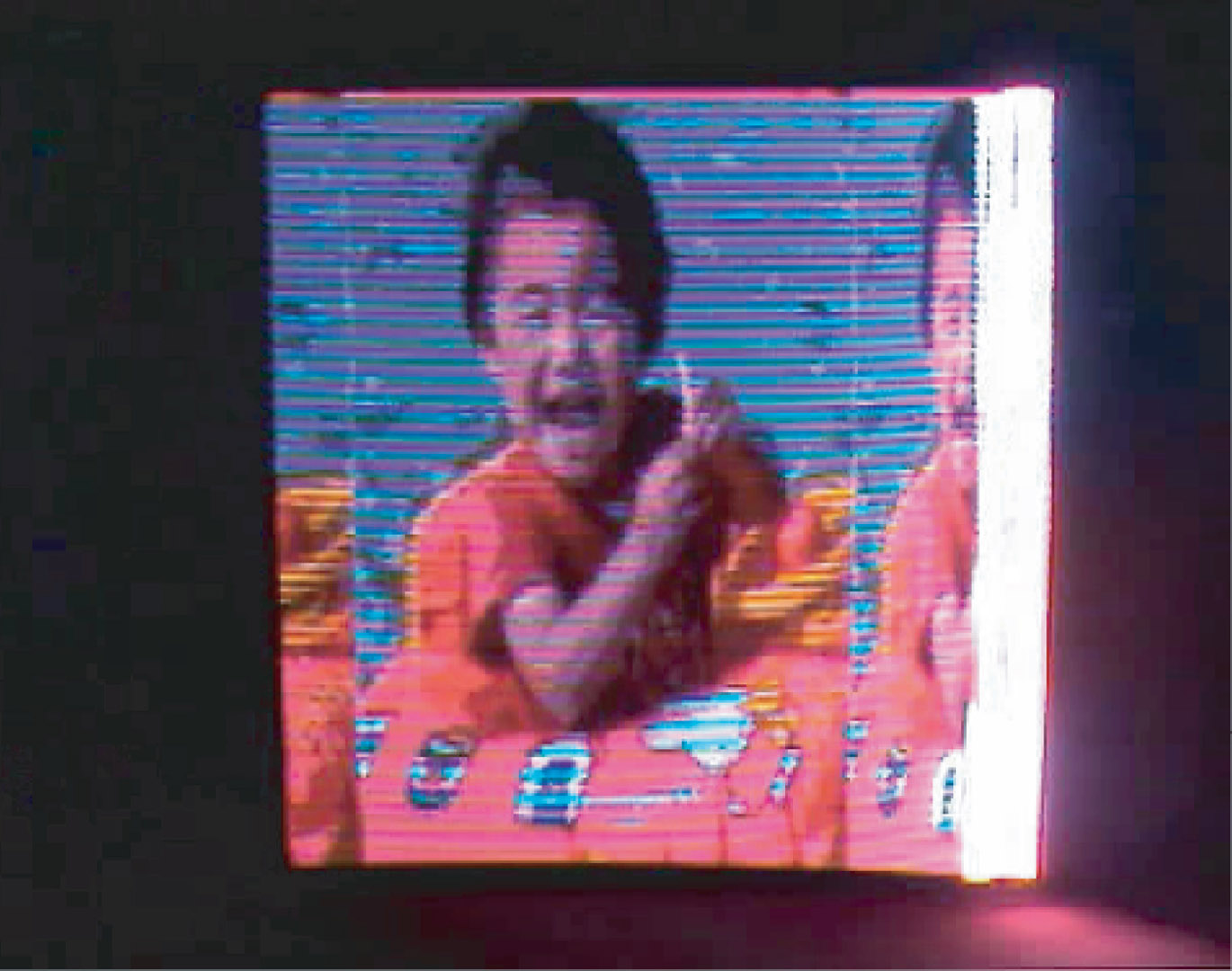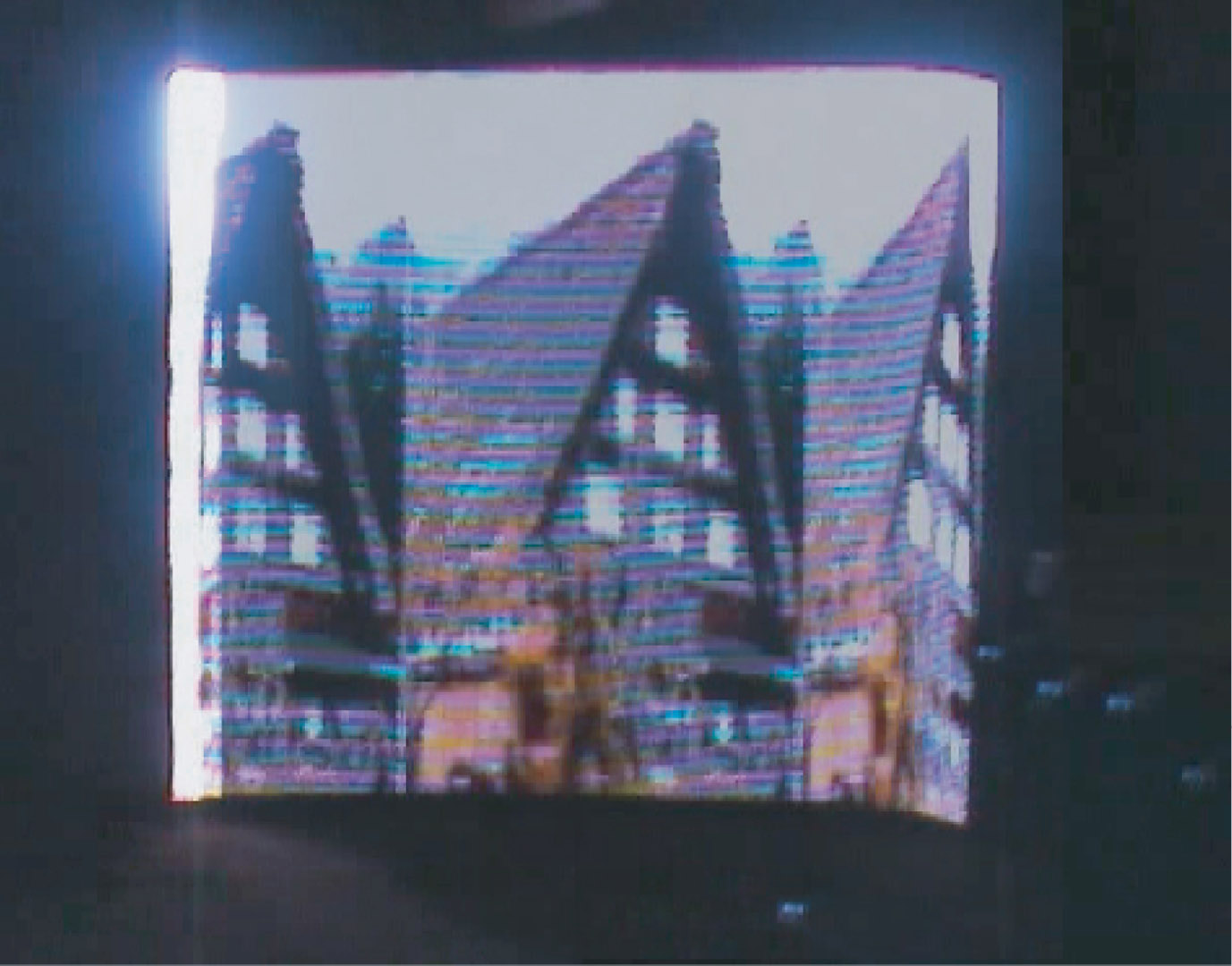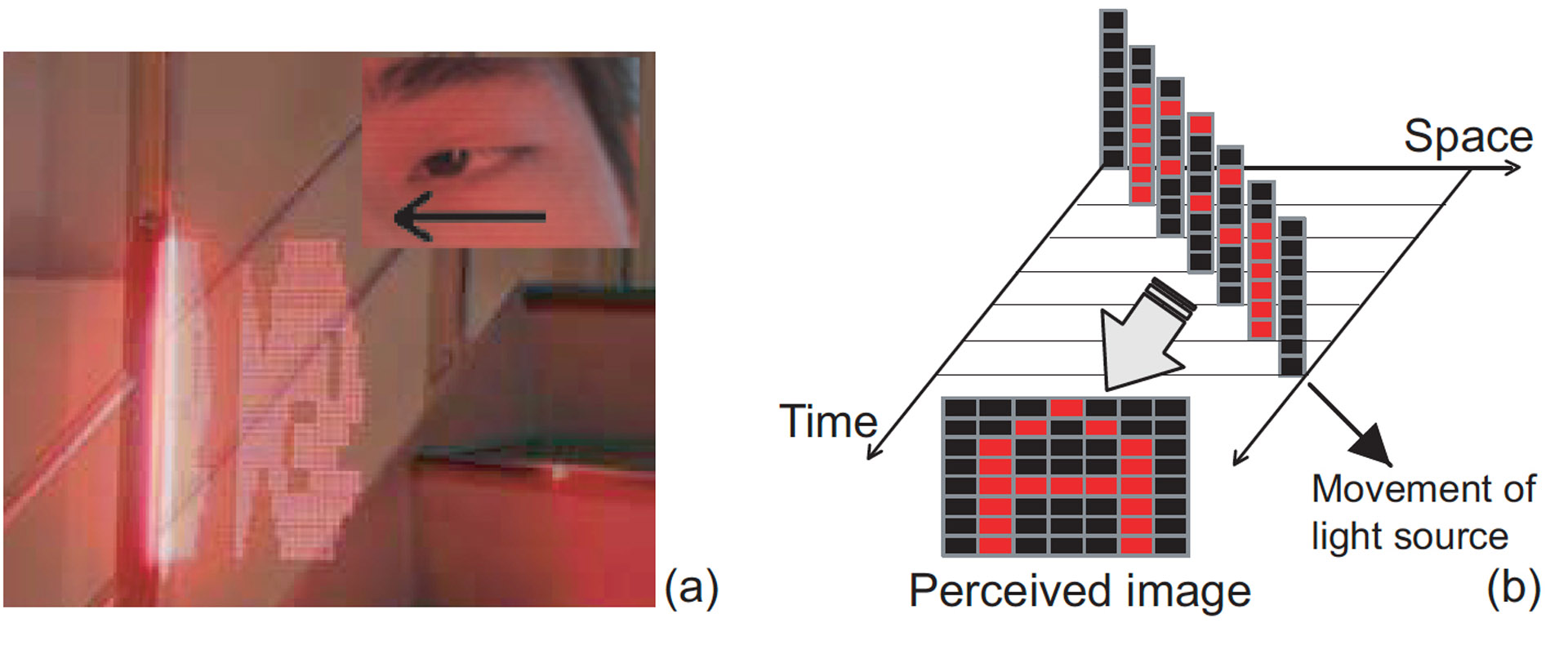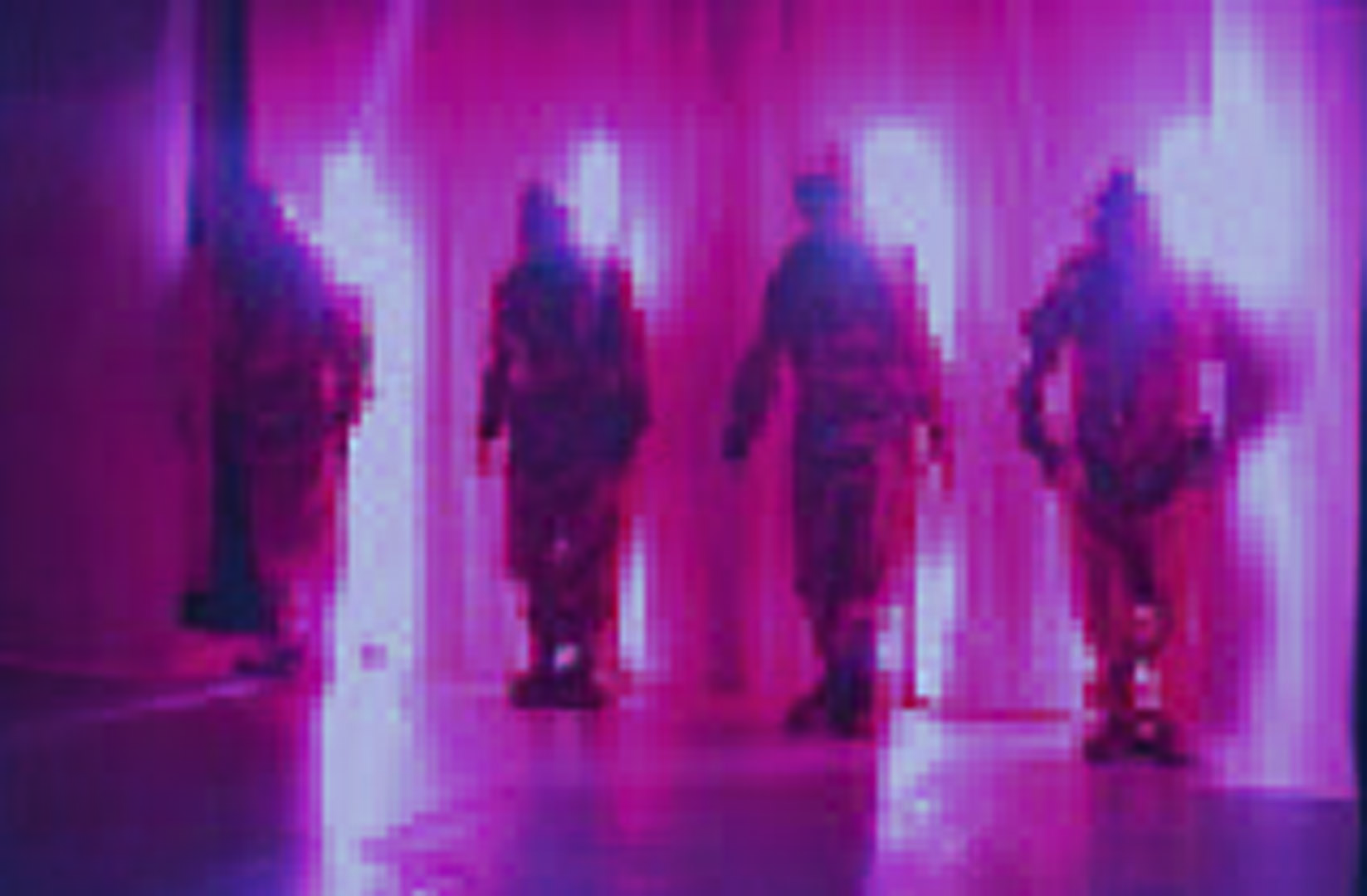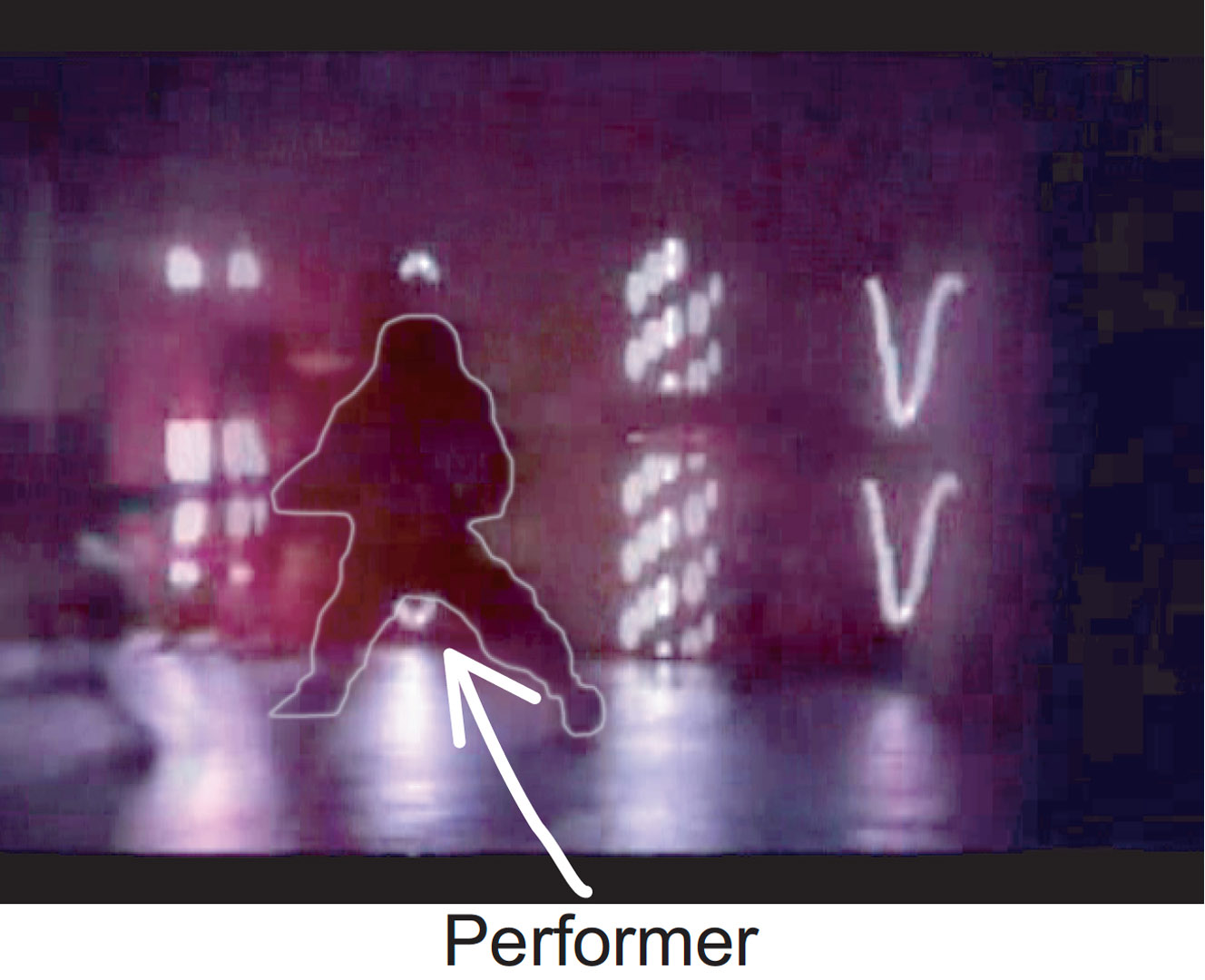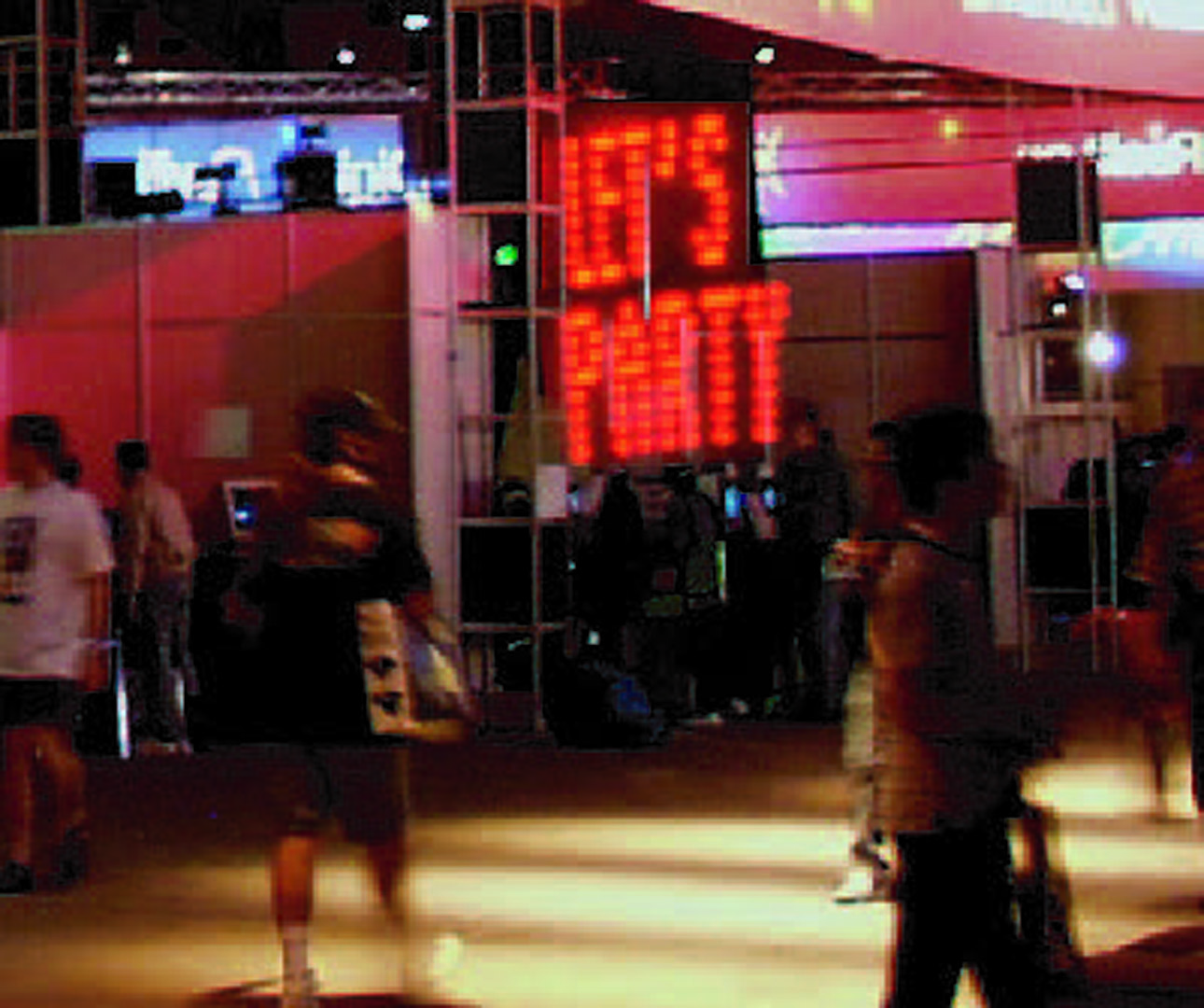“Full-scale saccade-based display: Public / Private image presentation based on gaze-contingent visual illusion” by Ando, Watanabe, Amemiya and Maeda
Conference:
- SIGGRAPH 2007
-
More from SIGGRAPH 2007:


Type(s):
Entry Number: 06
Title:
- Full-scale saccade-based display: Public / Private image presentation based on gaze-contingent visual illusion
Presenter(s):
Description:
Introduction
Pursuing new display techniques based on insights of human visual perception can open up new possibilities for visual information presentation. Here we present the vast refinement of an information display method, which we call a saccade-based display. The saccade-based display can show two-dimensional (2D) images without any screen using only a single line of flickering light emitting diodes (LEDs). The following principle is fundamental to the implementation of this display. It is known that mechanical highspeed movement of a one-dimensional flickering LED array can present 2D images through retinal afterimages (this kind of visual display is commercially available [IMS 2000]) Conversely, when light sources are fixed on a vertical line, and the flashing pattern is changed quickly during a horizontal rapid eye movement called a saccade, 2D images can also be perceived due to spatio-temporal integration in the human vision system as in fig. 1(a). When a vertical line of lights flashes quickly during the horizontal saccade, the flashing pattern is expanded into a spatial pattern by the eye movement. During the eye movement, the vertical light array travels on the retina while changing the flashing pattern. Then, the different vertical images at different retinal locations are integrated into a 2D image as in fig. 1(b). Although the images presented during the saccade can hardly be seen in daily life (e.g. [Latour 1962]), the images with high contrast and high spatial frequency as presented with this display can be recognized [Watanabe et al. 2005b][Watanabe et al. 2005a].
This illusory phenomenon has been used for the visual effects in the field of art and entertainment [Bell 1993][Bur 1989]. For example, Watanabe et al. used this phenomenon on the performing art stages, which was created in collaboration with media performance group ”cell/66b” [Watanabe et al. 2004]. On performing art stages, audiences make eye movements at various times triggered by bodily actions and spot lights. If light arrays are flickering fast enough during the eye movements, the members of audience can perceive 2D images, and the shape and width of the images are different among them. Four large LED arrays (1.8m in height) were used on the stage. They were located behind the performers as in fig. 2(a). The LED arrays function not only as illumination, but as a visual display, which can present different 2D images for each audience as in fig. 2(b).
In addition, when we consider this phenomenon as a visual information display principle, this method greatly reduces the space need for the device (one line is enough for 2D image presentation), and it can display visual images even in midair. These features can be applied to an augmented reality visual display that can superimpose various types of information onto real environments, to the field of entertainment, and to light devices for commercial advertising.
Other Information:
References
ANDO, H., WATANABE, J., AMEMIYA, T., AND MAEDA, T. 2005. study of saccade-incident information display using saccade detection device. In Proceedings of the 15th International Conference on Artificial Reality and Telexistence, 119–124.
ASL. Eye Tracking Expertise. Applied Science Laboratories, Retrieved Jan. 1, 2007, from http://www.a-s-l.com/.
BELL, B. 1993. Light Stick. Exploratorium, Retrieved Jan. 1, 2007, from http://www.exploratorium.edu/.
THE BURNING MAN PROJECT. 1989. Burning Man, Retrieved Jan. 1, 2007, from http://www.burningman.com/.
IMS INC. 2000. Fantazein, Retrieved Jan. 1, 2007, from http://www.fantazein.com/.
LATOUR, P. 1962. Visual threshold during eye movements. Vision Research 2, 261–262.
TRIESCH, J., SULLIVAN, B., HAYHOE, M., AND BALLARD, D. 2002. Saccade contingent updating in virtual reality. In Proceedings of the symposium on Eye Tracking Research and Applications, 95–102.
WATANABE, J., TAVATA, T., VERDAASDONK, M. A., ANDO, H., MAEDA, T., AND TACHI, S. 2004. Illusory interactive performance by self eye movement. In Siggraph2004 Conference DVDROM Sketches.
WATANABE, J., MAEDA, T., AND TACHI, S. 2005. Time course of localization for a repeatedly flashing stimulus presented at perisaccadic timing. Systems and Computers in Japan 36, 9, 77–86.
WATANABE, J., NORITAKE, A., MAEDA, T., TACHI, S., AND NISHIDA, S. 2005. Perisaccadic perception of continuous flickers. Vision Research 45, 413–430.
WATANABE, J., ANDO, H., MAEDA, T., AND TACHI, S. 2007. Gaze-contingent visual presentation based on remote saccade detection. Presence: Teleoperators and Virtual Environments 16, 2, in press.
Additional Images:
